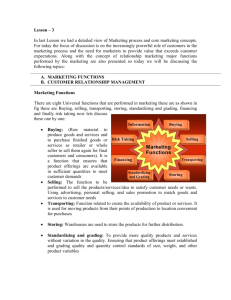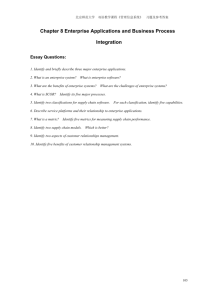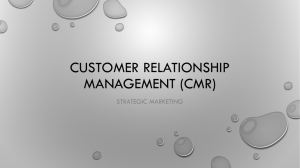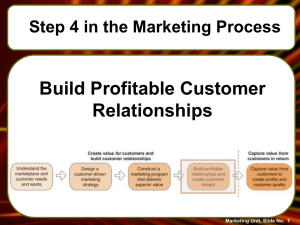ch 9
advertisement
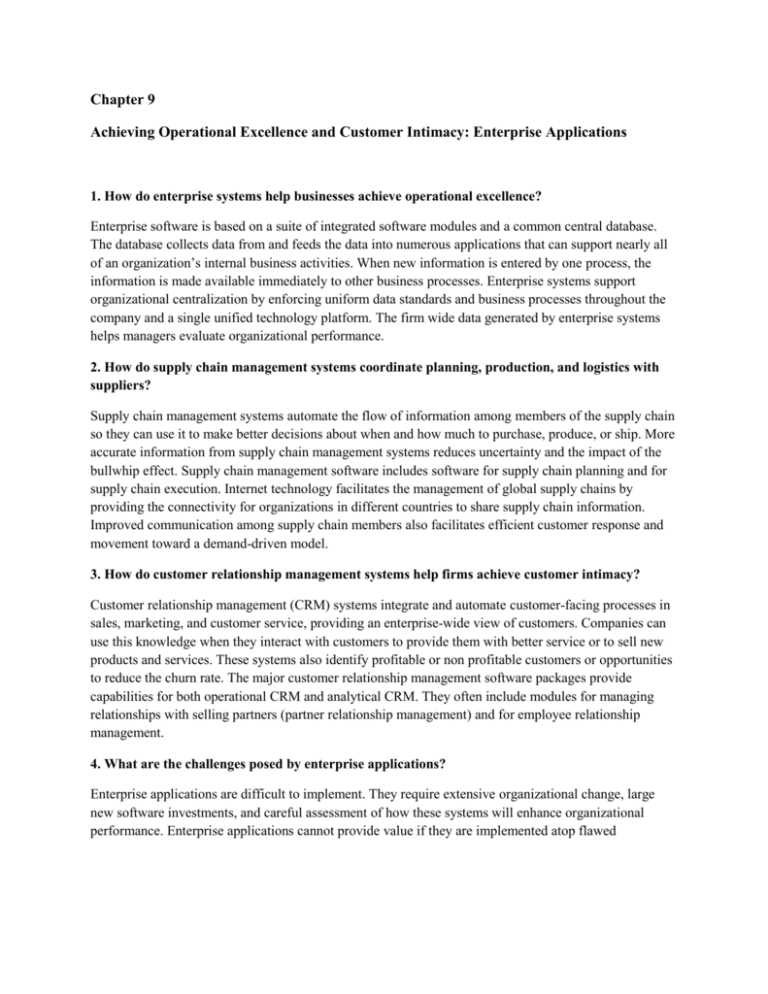
Chapter 9 Achieving Operational Excellence and Customer Intimacy: Enterprise Applications 1. How do enterprise systems help businesses achieve operational excellence? Enterprise software is based on a suite of integrated software modules and a common central database. The database collects data from and feeds the data into numerous applications that can support nearly all of an organization’s internal business activities. When new information is entered by one process, the information is made available immediately to other business processes. Enterprise systems support organizational centralization by enforcing uniform data standards and business processes throughout the company and a single unified technology platform. The firm wide data generated by enterprise systems helps managers evaluate organizational performance. 2. How do supply chain management systems coordinate planning, production, and logistics with suppliers? Supply chain management systems automate the flow of information among members of the supply chain so they can use it to make better decisions about when and how much to purchase, produce, or ship. More accurate information from supply chain management systems reduces uncertainty and the impact of the bullwhip effect. Supply chain management software includes software for supply chain planning and for supply chain execution. Internet technology facilitates the management of global supply chains by providing the connectivity for organizations in different countries to share supply chain information. Improved communication among supply chain members also facilitates efficient customer response and movement toward a demand-driven model. 3. How do customer relationship management systems help firms achieve customer intimacy? Customer relationship management (CRM) systems integrate and automate customer-facing processes in sales, marketing, and customer service, providing an enterprise-wide view of customers. Companies can use this knowledge when they interact with customers to provide them with better service or to sell new products and services. These systems also identify profitable or non profitable customers or opportunities to reduce the churn rate. The major customer relationship management software packages provide capabilities for both operational CRM and analytical CRM. They often include modules for managing relationships with selling partners (partner relationship management) and for employee relationship management. 4. What are the challenges posed by enterprise applications? Enterprise applications are difficult to implement. They require extensive organizational change, large new software investments, and careful assessment of how these systems will enhance organizational performance. Enterprise applications cannot provide value if they are implemented atop flawed processes or if firms do not know how to use these systems to measure performance improvements. Employees require training to prepare for new procedures and roles. Attention to data management is essential. 5. How are enterprise applications used in platforms for new cross functional services? Service platforms integrate data and processes from the various enterprise applications (customer relationship management, supply chain management, and enterprise systems), as well as from disparate legacy applications to create new composite business processes. Web services tie various systems together. The new services are delivered through enterprise portals, which can integrate disparate applications so that information appears to be coming from a single source. Open source, mobile, and cloud versions of some of these products are becoming available.







